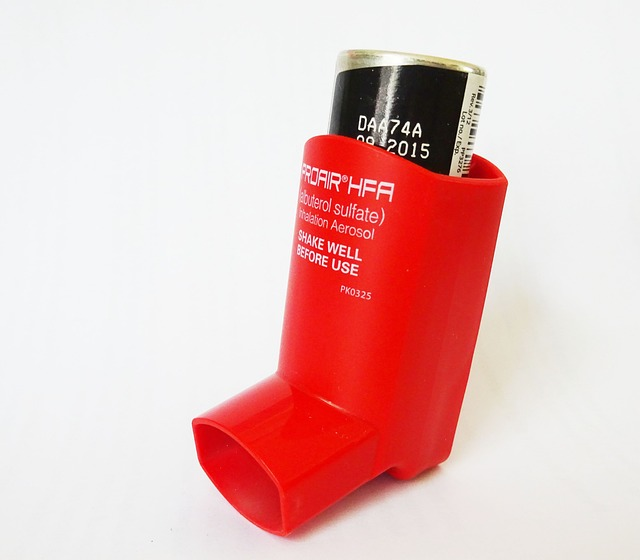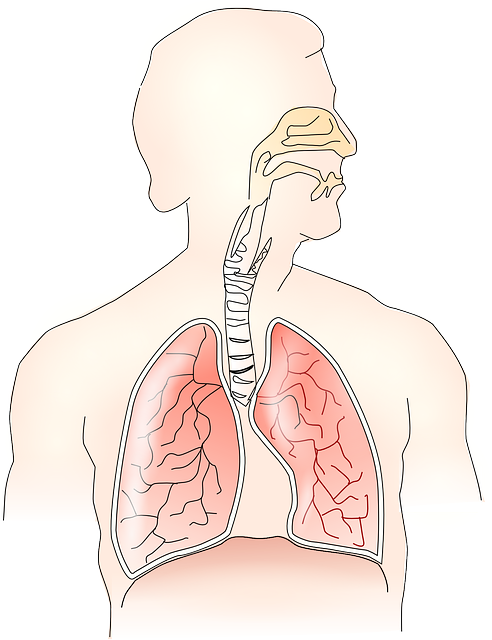A Comprehensive Guide to Asthma Medications and Treatments in Palm Springs
Asthma is a prevalent chronic lung condition affecting millions, including a significant number of residents in Palm Springs. With environmental triggers like dust and pollen common in desert climates, managing asthma effectively is crucial for maintaining quality of life. This treatment guide provides an overview of asthma medications and treatments, offering insights into both short-term relief and long-term management strategies suitable for the Palm Springs climate.
Summary Points
1. Understanding Asthma
Asthma affects approximately 25 million Americans, causing episodes of wheezing, breathlessness, chest tightness, and coughing. While asthma can affect anyone, it’s particularly challenging in environments like Palm Springs where environmental allergens are prevalent.
2. Long-term Asthma Medications
Managing asthma typically involves long-term medications, including:
– Inhaled Corticosteroids: Reduce inflammation and help manage daily symptoms.
– Leukotriene Modifiers: Prevent asthma symptoms for up to 24 hours.
– Combination Inhalers: Contain both a corticosteroid and a bronchodilator for those who need additional control.
3. Rescue Inhalers for Immediate Relief
For sudden asthma symptoms or attacks:
– Short-acting Beta Agonists: Common rescue inhalers used during an asthma attack to quickly ease symptoms.
4. Monitoring and Managing Side Effects
Regular consultation with healthcare providers is essential to manage potential side effects of long-term asthma medication use. Adjustments to treatment plans may be necessary based on the individual’s response.
What is Asthma?
Asthma is a long-term inflammatory disease of the airways in the lungs. In response to triggers such as allergens, cold air, or exercise, the airways become narrower, leading to symptoms that range from mild to life-threatening. In places like Palm Springs, where the dry, sandy environment can carry allergens like pollen and dust, managing asthma is particularly crucial.
Local Considerations for Asthma Management in Palm Springs
– Environmental Triggers: Awareness and avoidance of local triggers are important. Keeping windows closed during high winds and using air purifiers can help minimize indoor allergens.
– Climate Impact: The hot, dry climate can exacerbate asthma symptoms. Staying hydrated and using humidifiers at home can help manage these effects.
– Emergency Preparedness: Knowing the location of the nearest hospital or emergency room and having a clear action plan for severe asthma attacks is essential, especially in a region prone to environmental triggers.
Next Steps?
For residents of Palm Springs with asthma, understanding how to effectively use asthma medications and manage environmental triggers is key to maintaining control over the condition. By staying informed about the latest treatment options and local environmental factors, individuals with asthma can lead active and healthy lives.
This guide aims to empower Palm Springs residents with asthma by providing detailed information on medication options and practical tips tailored to their specific environmental challenges, helping them navigate asthma management more effectively.
Asthma symptoms include wheezing, chest tightness, coughing, and difficulty breathing. Asthma attacks can range in severity, and some can even be life-threatening. Asthma symptoms occur due to inflammation in the airways, which leads to narrowing, sensitivity, or blockage of the airways, making it difficult for air to enter and exit the lungs (2).
There is still much to learn about the causes of airway inflammation in asthma. However, asthma often occurs when the immune system overreacts to a substance in the lungs.
Typically, the immune system of our body aids in combating infections. However, it may also react to other substances we inhale, like pollen or mold. In some individuals, the immune system responds intensely by producing inflammation. As a result, the airways become swollen and constricted and may generate more mucus. Additionally, the muscles surrounding the airways can tighten, making breathing even more difficult. With time, the airway walls may thicken.
Unfortunately, there is no known cure for asthma, but managing the symptoms can lead to successful control of the condition.

About Asthma Medications and Symptoms Management
Managing and preventing asthma attacks are the main goals of treatment. You will work with your healthcare provider to develop an individualized asthma treatment plan. It is essential to follow your treatment plan and to understand the role each treatment plays in managing your asthma. Each treatment has a specific purpose, and it is vital to know their functions.
Individuals who have asthma can manage symptoms by taking medication and avoiding triggers. Proper treatment can reduce symptoms, treat asthma attacks, and lower the risk of hospitalizations, allowing for everyday activities. If you experience an asthma flare-up, it may be necessary to use a quick-relief inhaler.
If you have asthma, you may require fast-acting rescue medications, long-term treatments, or a combination, depending on your symptoms.
Choosing the proper medications to treat your asthma depends on factors such as age, symptoms, asthma triggers, and what works effectively in managing your asthma.
Preventive and long-term control medications are designed to minimize the inflammation in your airways, which can cause symptoms. On the other hand, quick-relief inhalers, also known as bronchodilators, are used to open swollen airways and improve breathing quickly. In certain situations, allergy medications may also be required.

Quick Relief Asthma Medications
If you have asthma and want to alleviate the symptoms quickly, a rescue inhaler can help you.
These medicines work by relaxing the muscles that constrict around your airways, which helps to widen them and make breathing easier. They are beneficial during a severe asthma attack. However, it is essential to note that if you use these medications more than twice a week, you should make an appointment with your doctor as soon as possible.
Types of rescue medications include:
- Short-acting beta-agonists. These medications are inhalers of choice for quick relief of asthma symptoms and to combat asthma attacks. They include epinephrine (brand names: Primatene Mist, Asthmanefrin), albuterol (brand names: Proventil HFA, ProAir HFA, Ventolin HFA), and levalbuterol (brand name: Xopenex HFA). These medications can be administered through a portable, hand-held inhaler or a nebulizer machine, which converts asthma medications into a fine mist inhaled through a face mask or mouthpiece.
- Anticholinergic agents. Medications such as ipratropium (brand name: Atrovent HFA) open your airways and reduce mucus. However, they take longer to take effect than short-acting beta-agonists.
- Oral corticosteroids. Oral corticosteroids, such as methylprednisolone (Medrol) and prednisone (Prednisone Intensol), help alleviate airway inflammation caused by severe asthma. However, these drugs can cause severe side effects when used for long periods. Therefore, they are only prescribed briefly to address severe asthma symptoms.
- Theophylline. You can treat mild asthma by taking Theo-24, a bronchodilator in pill form. It relaxes the airways and reduces lung response to irritants. Although not commonly used, it can alleviate nighttime asthma symptoms.
It’s important to note that if your long-term asthma control medications are effective, you shouldn’t need to rely on your quick-relief inhaler frequently to alleviate asthma flare-ups.

Asthma Medications for Long-Term Control
Individuals with asthma may require daily long-term control medication, even without symptoms. Multiple types of these medications are available.
Inhaled corticosteroids. The most commonly used long-term control medications for asthma are inhaled corticosteroids. This allergy medication is highly effective in reducing swelling and tightening in the airways. It may take several months of consistent use to experience their full benefits. Examples include Mometasone (brand names: Asmanex, Twisthaler) and Fluticasone (brand name: Flovent HFA).
Leukotriene modifiers. Leukotriene modifiers can prevent asthma symptoms for up to 24 hours by blocking the effects of immune system chemicals called leukotrienes. An example is Montelukast (brand name: Singulair).
Combination inhalers. Some rescue inhalers combine a corticosteroid with a bronchodilator. They can provide immediate and long-lasting asthma relief. Examples include Budesonide and formoterol (brand name: Symbicort) and Fluticasone and Vilanterol (brand name: Breo Ellipta).
Long-acting beta agonists (LABAs). Bronchodilator medications called Long-Acting Beta Agonists (LABAs) can open airways and reduce swelling for at least 12 hours. These medications are used regularly to manage moderate to severe asthma and prevent nighttime symptoms.
Long-acting muscarinic antagonists (LAMAs). If LABAs cannot be used, Long-Acting Muscarinic Antagonists (LAMAs) are an alternative option. LAMAs are also bronchodilators that can be combined with an inhaled corticosteroid to control asthma symptoms. A LAMA can also be added to an LABA and inhaled corticosteroid treatment for better asthma management.

Allergy Medications to Reduce Asthma Symptoms
Medications are available that target allergy triggers, also called allergens, which can lead to asthma. These medications include:
- Allergy shots. If allergic asthma cannot be managed by avoiding triggers, allergy shots (immunotherapy) could be a viable option. First, you will undergo skin tests to identify the allergens that cause your asthma symptoms. Afterward, you will receive a series of injections that contain small doses of those allergens.
- Allergy medications. Different types of allergy medications can be taken orally or through nasal sprays. These include antihistamines, decongestants, corticosteroids, and cromolyn nasal sprays. These medications can be obtained either through prescription or over-the-counter. They can help alleviate allergy symptoms like congestion, runny nose, sneezing, sinus pressure, and itchy eyes. It’s important to note that these medications cannot replace asthma medications.
- Sublingual immunotherapy tablets. Instead of receiving allergy shots, you can opt for sublingual immunotherapy tablets that are taken in pill form and dissolve in your mouth. These pills are typically taken daily and can be effective for certain allergens such as grass, ragweed pollens, and dust mites.
Biologic drugs as Allergy Medications
If you have severe asthma that is difficult to control with regular medications, your healthcare provider may suggest treatment with biologics. These medications target specific cells or antibodies in the immune system to reduce inflammation. By combining biologics with other asthma medications, people with more severe forms of asthma can achieve better symptom management.
Your provider will usually perform blood tests to determine which biologic will be most effective for you. Biologics can be administered as injections or intravenously.
Examples of biological drugs used to treat asthma include omalizumab (brand name: Xolair) and mepolizumab (brand name: Nucala).
Side Effects of Allergy Medications
Like all medications, asthma drugs can cause side effects that may differ depending on the drug class, dose, and delivery method (inhalation or oral). Below are a few known side effects of various asthma medications.
- Inhaled corticosteroids or inhaled steroids. Side effects may include sore throat, throat irritation, hoarseness, oral thrush, cataracts, reduced bone density in adults, and glaucoma (3).
- Short- and Long-Acting Beta Agonists. The side effects of these medications may include dizziness, nervousness, tremors, skin rash, increased heart rate, and headache (4).
- Oral Corticosteroids. The side effects of oral corticosteroids may include high blood pressure, fluid retention, glaucoma, cataracts, weight gain, elevated blood sugar, type 2 diabetes, muscular weakness, and osteoporosis (a loss of bone density) in adults (5).
- Leukotriene Modifiers. The side effects of these drugs may include nervousness, upset stomach, nasal congestion, headache, nausea or vomiting, skin rash, and flu-like symptoms (6). Various mental health side effects may also occur, such as depression, agitation, aggression, sleep issues, and suicidal thoughts (7).
Other Asthma Treatments
Controlling asthma doesn’t always require medications. Your doctor may suggest bronchial thermoplasty as an alternative.
People with asthma often have an excess of smooth muscle in their airway walls. This procedure involves using a bronchoscope to administer heat to the walls and decrease the smooth muscle. The treatment is delivered over three visits, spaced approximately 2 to 3 weeks apart.
Create an Asthma Medications and Action Plan with Your Doctor
Collaborate with your doctor to develop an asthma action plan that puts in writing when to take specific medications or when to adjust the dosage of your medicines based on your symptoms. It’s also helpful to include a list of your triggers and the steps you can take to prevent them.
Your physician may suggest keeping track of your asthma symptoms or using a peak flow meter regularly to assess how well your treatment is managing your condition.
Natural Remedies to Relieve Asthma Symptoms
There are also a few natural remedies that can help improve asthma symptoms, including:

Practice Breathing Exercises
Specific breathing exercises, such as pursed lips and diaphragmatic breathing, can help people with asthma by opening their airways, allowing fresh air into their lungs, and making breathing easier. Below are three effective breathing exercises to try.
- Pursed-lip breathing: Breathe in through your nose and exhale slowly through pursed lips for twice as long.
- Diaphragmatic breathing: Breathe in slowly through your nose so that your stomach expands, then exhale slowly through pursed lips.
- Nasal breathing: Slowly inhale and exhale through your nose.
Drink Coffee (or Other Caffeinated Beverage)
Believe it or not, caffeine is a bronchodilator. This means that it can open your airways. However, it doesn’t work as fast or as aggressively as medications.
There is one big caution with caffeine consumption and asthma. Namely, before any medical appointment that may include a lung function test, avoid drinking a caffeinated beverage or eating foods that contain caffeine.

Increase Intake of Choline
Choline is an essential nutrient required for correct bodily function. You can increase your choline intake through your diet or supplement.
Foods rich in choline include:
- Eggs
- Poultry
- Meat
- Liver
- Fish
- Cauliflower
- Shellfish
- Peanuts
Take Black Seed Oil Supplements
Studies have indicated that black seed oil, particularly thymoquinone found in the oil, may help treat asthma by easing inflammation and relaxing muscles in the airway (8, 9, 10).
A study on 80 adults with asthma revealed that taking 500 mg of black seed oil capsules two times a day for several weeks significantly improved asthma management (11).
However, further extensive and prolonged research is required to evaluate the safety and efficacy of black seed oil supplements for treating asthma in the long term.

Avoid Triggers
Keep a journal recording each time you have an asthma attack to identify your triggers. Once you know your asthma triggers, you can avoid them, which will help improve your symptoms.
Common asthma triggers include:
- Pet dander
- Dust mites
- Mold spores
- Humid environment
- Cold or dry air
Summary
It’s important to note that asthma medicines do not cure asthma but can help alleviate symptoms. To ensure the best results, following your healthcare provider’s instructions precisely is crucial. This includes taking the correct medicine at the appropriate time with the proper technique.
To keep track of your medication, developing a schedule is recommended. This can also help you avoid missing doses. Additionally, it’s essential to track your symptoms and any side effects of your medication. Doing so allows you to adjust your treatment plan accordingly and keep your asthma symptoms under control.
Work with your healthcare provider to create a detailed plan for taking long-term control medications and managing an asthma attack. A plan for managing asthma with long-term control medications and handling attacks is important to follow closely, including adjusting medications and consulting your provider as needed. If your provider has prescribed a peak flow meter to measure your lung function, it’s crucial to use it according to your plan.
Even if you feel well, taking your medications as prescribed and tracking your symptoms until you talk to your provider is important. Doing so can ensure that your asthma is under control and improve your overall quality of life.
Frequently Asked Questions
What medications are best for asthma?
Inhaled corticosteroids are effective long-term control medicines, including beclomethasone, budesonide, ciclesonide, Fluticasone, and mometasone. Don’t worry. They are not the same as anabolic steroids used for muscle growth.
What drug is for quick relief of asthma?
Quick-relief medications relieve asthma symptoms like coughing, wheezing, and chest tightness. Examples include Proventil HFA, ProAir HFA, Ventolin HFA, albuterol, Maxair, and Xopenex.
What medication opens airways?
Bronchodilators relax the muscles in the lungs and widen the airways, making breathing easier.
What medications should be avoided with asthma?
Beta-blockers, non-steroidal anti-inflammatory drugs (NSAIDs) like aspirin, and angiotensin-converting enzyme (ACE) inhibitors are commonly used medications that can exacerbate asthma symptoms.
1- https://www.cdc.gov/mmwr/volumes/70/ss/ss7005a1.htm
3- https://www.jaci-inpractice.org/article/S2213-2198(18)30052-7/fulltext
4- https://link.springer.com/chapter/10.1007/164_2016_64
5- https://erj.ersjournals.com/content/52/suppl_62/PA3144
6- https://brieflands.com/articles/ijp-3313.html
8- https://www.ncbi.nlm.nih.gov/pmc/articles/PMC4387229/
9- https://pubmed.ncbi.nlm.nih.gov/28093815/
Dr. Matthew Olesiak, MD, is the Chief Medical Director at SANESolution, a renowned wellness technology company dedicated to providing evidence-based solutions for optimal living. Dr. Olesiak earned his medical degree from the prestigious Jagiellonian University Medical College in Kraków, Poland, where he developed a strong foundation in medicine.




